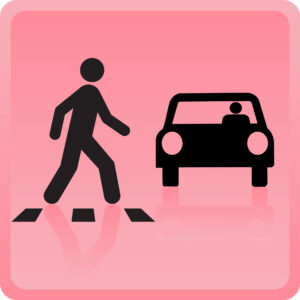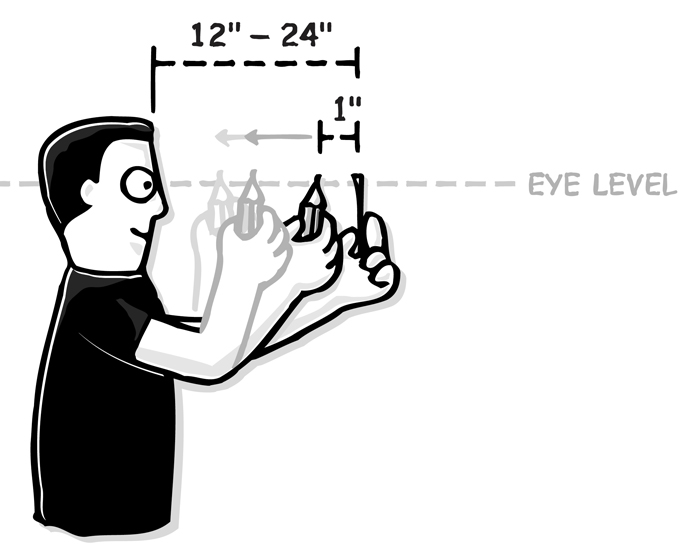
Macular Degeneration and Driving: Testing Low Vision
Perhaps one of the most difficult parts of getting older is losing independence. Whether this means needing assistance in your own home or moving in with your kids or into an assisted living center or nursing home, it can be an emotional event for everyone involved. Often, a big reason older adults get to the point where they can’t live on their own anymore is that they can no longer drive themselves places.
Adults lose the ability to drive for various reasons. Sometimes, it has to do with their overall mobility. But for most people, the number one reason is that they have experienced changes in their vision. Whether you or an aging family member are suffering from glaucoma or age-related macular degeneration, low vision also often means low independence. The connection between macular degeneration and driving unsafely is fairly strong, unfortunately.

However, an AMD diagnosis isn’t always an immediate directive to take away the car keys. Driving with low vision is possible for some. Today, we’ll explore how to find out if you can drive with macular degeneration, as well as look at some helpful low vision driving aids. These tips could help you or your elderly loved one maintain independence for longer.
Age-Related Macular Degeneration
What exactly is age-related macular degeneration? In simple terms, this disease means that as you age, the macula, or the small, detail-sensitive part of the retina, also ages, deteriorating over time. The macula allows the eye to perform tasks like reading, recognizing faces, and driving.
The remainder of the retina is known as the peripheral retina. It is used for peripheral vision and for identifying general shapes. As you can probably guess, losing both your central and peripheral vision can make driving difficult. This is why many senior citizens lose the ability to drive.
If you’re worried about your or a loved one’s vision, here are some common symptoms to watch out for:
- Blurriness
- Dark areas or distortion in central vision
- Loss of central vision altogether
- Maintaining the ability to see the outline of an object, but not the details
Studies are inconclusive as to what exactly causes macular degeneration. However, there are some known risk factors. Macular degeneration most commonly occurs in individuals over 50 years of age. It is more common for those with a family history of AMD. White women are also at a higher risk of AMD, but it is present in all races and genders. It is also important to know that the presence of AMD in one eye substantially raises the risk of it occurring in the other.
Can You Drive with Macular Degeneration?
Before we talk about steps you can take to prevent AMD, let’s discuss how macular degeneration might impact your lifestyle, particularly regarding driving. Obviously, driving with central vision loss is not a good idea. There is also a substantial negative correlation between peripheral vision loss and driving safety. Some studies show that driving with reduced visual processing and motion detection can significantly impact driving performance. This can be especially true at night – another study found that reaction time is especially slow at night for older drivers. Add some vision loss from AMD to that, and you are creating a dangerous driving cocktail.
So how do you know when it’s time to stop driving? Testing low vision driving abilities is one way to get a concrete answer. In most states, the DMV offers tests for older citizens to be sure they are safe to drive. Some states also require that people trying to renew their license over the age of 80 present proof of an eye exam conducted within the last year. Low vision driving requirements vary by state, but generally include a minimum visual acuity of 20/40, a horizontal field of vision of at least 70 degrees, and the ability to distinguish red, green, and amber. A simple test from your eye doctor or a driving test at the DMV can ensure you or your loved one fulfills these eyesight requirements for driving.
But how long can you drive with macular degeneration? Well, as long as you can pass the test. And, you should also know that there are actually a lot of low vision driving aids that can make safe driving possible. Bioptic telescope lenses magnify distant objects for tasks like reading signs. Prism glasses can improve awareness of peripheral vision. You can also add special car modifications such as high-intensity lights and adaptive control devices to make driving with low vision easier. Even just keeping up with your headlight hygiene (i.e., ensuring the covers don’t get foggy) can help you drive safely for longer.
How to Avoid AMD
While there is currently no cure for macular degeneration, there are steps that everyone can take to prevent the onset of AMD or its further development.
For one, quitting smoking can pay dividends in both your current and future eye health. Smoking increases the risk of AMD, especially for those who are already genetically at risk. Eating a nutrient-rich diet full of brightly-colored vegetables is helpful, too. Practicing some form of physical exercise daily, such as walking or cycling, can also improve your vision health.
Vitamins and antioxidants can also make a huge difference in the fight against AMD. A recent literature review found overwhelming evidence that taking vitamins C, E, beta-carotene, and zinc significantly delayed the onset of AMD. This is because, as antioxidants, they prevent the oxidation of cells in the macula, preserving your vision for longer. Additionally, these vitamins and minerals will also support your long-term visual health.
Age-related macular degeneration is the most common cause of vision loss. So, it is vital that everyone is aware of the nature of the disease and the symptoms it involves. It’s especially important for those approaching or above 50 years of age.
As the studies above have shown, AMD can have a dramatic impact on one’s driving ability. Low vision driving cannot be as safe as healthy vision driving. Understanding your or your loved one’s limitations is an important first step in ensuring everyone’s safety. Establishing and maintaining proper eye health and nutrition is a key way to immediately begin preventing or slowing the progression of age-related macular degeneration.




I really enjoy the information you provide Tyler.
Actually you are a good writer and deliver the information
in an honest and forthright way.
The responses are good as well.
Does this also apply to suspicious Glaucoma?
I enjoy your commentary and links. I read that about 8 percent of seniors, 65 have Glaucoma, loss of peripheral vision. Such drivers need to keep their eyes moving for if they look straight ahead they won’t see someone or something entering from the side. Docs say glaucoma is irreversible, it can often be arrested but not cured. I hope someone proves them wrong.
about 3 years ago I had a hole in the macular I did the operation but now I have a blind spot in the middle of my eye a year ago I develop cataract in that I and did surgery to correct that but my vision is worse I can not drive at night the lines on the road Crosse each other and it is very bluer the doctors do not have a answer maybe you do thank you